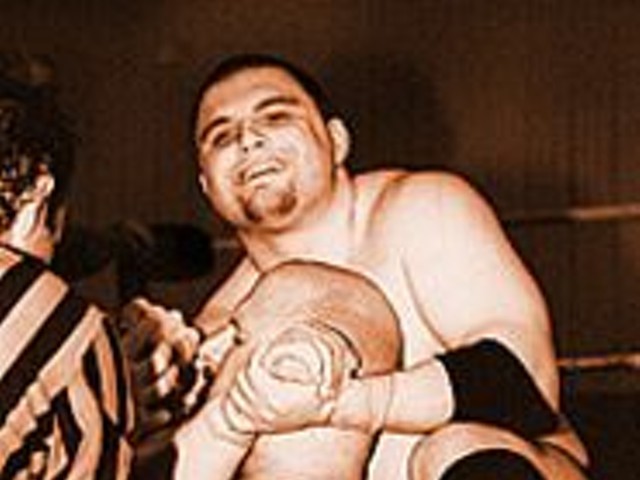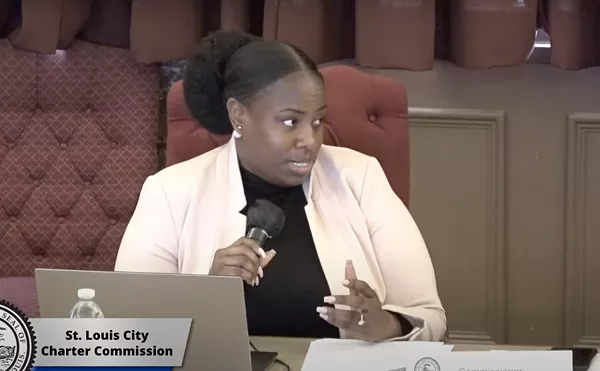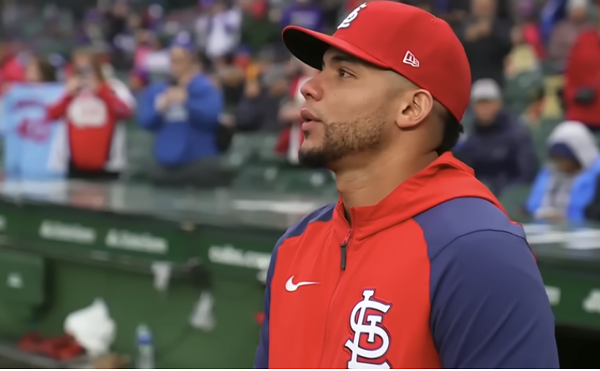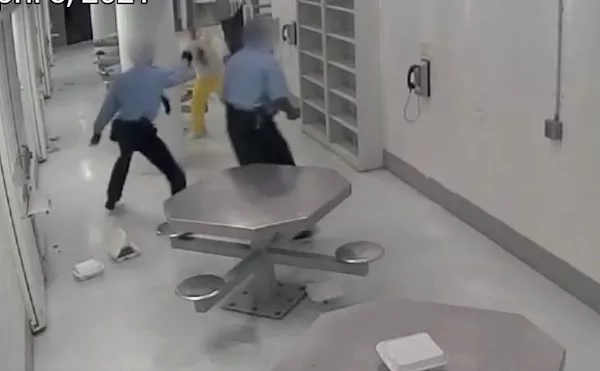It wasn't enough, though. Ever since he was a teenager, Curtis Parker had wanted to be a professional wrestler.
Similar to stocky mat master and Morris Day aficionado Koko B. Ware in stature at five-foot-nine and 180 pounds, Parker sent audition tapes to World Wrestling Entertainment. When that proved futile, he attempted to land a gig on Tough Enough, the MTV show that promises a WWE spot to the would-be wrestler who emerges from weeks of rigorous training.
At the beginning of last summer, it became evident that this ploy was yielding goose eggs as well. So Parker turned his attention to the Mid Missouri Wrestling Alliance-Southern Illinois Championship Wrestling, a St. Louis-based minor-league wrestling organization that takes all comers and puts on a monthly card of bouts at the South Broadway Athletic Club, which is the league's official sponsor.
Sometime after the Fourth of July, Parker began workouts in SBAC's dank gymnasium, where the league's ever-evolving cast of wannabe Ric Flairs and Ricky Steamboats shares precious space with the club's aspiring boxers, tussling several times a week in a ring floored in thin rubber with a plywood underbelly.
On July 22, shortly after his fourth workout at SBAC, Curtis Parker slipped into a coma. He died July 31. On October 23, St. Louis medical examiner Michael Graham concluded that Parker had died as a result of bleeding on the surface of his brain. Shortly thereafter, prominent Clayton attorney Richard Banks filed a wrongful-death lawsuit in St. Louis Circuit Court on behalf of Parker's brother Perry Richardson, alleging negligence by SBAC -- in particular, club fighting promoter John F. Castaldi. A court date has yet to be set.
The lawsuit alleges, among other things, that Parker's death was the result of an "unreasonably dangerous wrestling maneuver" -- Banks blames a head-slamming pile drive" administered by a much larger and more experienced wrestler. But ever since his first practice, Parker had been complaining of painful headaches, something family, friends and his training partners openly expressed concern about. His best friend urged him to consider quitting.
"He was complaining of head-pounding," says the friend, Booker Holmes, who is also the brother of Parker's fiance, Linda Holmes. "His back was hurting. He wasn't seeing so good. It [wrestling practice] was hurtin' him."
The critical question may therefore be whether it was SBAC's training methods or Parker's own bullheaded pursuit of his pipe dream that led to his death.
Or maybe pro wrestling's beefcake ballet is potentially lethal in its very nature, even in the minor leagues.
SBAC president Don Caviecy says Parker signed a comprehensive health waiver, thereby absolving the club of any responsibility for his death. Attorney Banks says SBAC has yet to produce such a waiver -- and it won't matter to him if they do.
"There is no sort of waiver for the type of negligence we believe transpired," says Banks, who cites Parker's relative inexperience and the inherent danger of the maneuver he was practicing.
State athletic-department inspector Raymond Kube, who doubles as head boxing trainer at SBAC, says it's common for a lighter wrestler to be thrown in the ring with a more experienced heavyweight during practice.
"They weren't really wrestling -- they were working on technique," says Kube. "I think it was probably better that he [Parker] was in there with a bigger guy. He could hold him and break his fall. You've always got to put another guy up there to spar who's better -- not to beat him up but to make sure he has everything down."
On viewing a wrestling practice at SBAC, one instantly realizes that Kube's on point about at least one thing: Breaking the fall is as important as the execution of the offensive move itself. To this end, it's incumbent on both the aggressor and the fall guy to make sure serious injuries do not occur.
Other wrestlers acknowledge that they've inadvertently hit their heads on the ring's lightly padded plywood surface. But never has a situation as serious as Parker's emerged from the occasional practice misstep, at least not in recent memory, says a redheaded wrestler called the Amish Warrior, currently ranked fourth in the league's heavyweight division.
But there's another factor in Parker's case: his own seemingly stubborn pursuit of his dream.
"It's not high-class wrasslin' -- it's a piece of junk," says Holmes. "It's ghetto wrestling."
But Holmes says Parker refused to quit.
"He [Parker] said, 'I'll be all right,'" Holmes adds. "But me and Terry [Hinton, who lifted weights regularly with Holmes and Parker at the city's 12th and Park Recreation Center] were telling him, 'everything isn't for everybody.'"
The Amish Warrior and other wrestlers decline direct comment on the case, citing a gag order put on them by their attorney. But Kube doubts whether Banks has the juice to win over a jury.
"I kind of find it hard to believe that they can go back and say it was caused by someone else," says Kube. "This kid was suffering from bad headaches before that."
Although no one in Parker's inner circle knows precisely what transpired in the hours before Parker became comatose, all claim that they might never have filed suit had SBAC officials or wrestlers come forward with a cohesive explanation about what happened to Parker in the ring.
"I just want to know what exactly happened to my brother," says Richardson. "Had they told me the truth right away, I would have been fine with it."





